You're using an outdated browser. Please upgrade to a modern browser for the best experience.
Please note this is an old version of this entry, which may differ significantly from the current revision.
In construction engineering, there are many interactive and decision-making behaviors which could affect the progress and final performance. Based on the people-oriented concept, managing construction engineering should not ignore the understanding of individual behavior, and neuropsychology provides a refined microscopic perspective.
- construction engineering
- management
- behavior
- neuropsychology
1. Introduction
People have been thinking about themselves and understanding their behaviors since ancient times, and this is reflected in ancient Western and Eastern culture. However, limited by science and developing technology, it has mainly manifested in the level of philosophical thinking. Modern science has shown that all human behaviors are inseparable from neural mechanisms. It has become common knowledge that the brain controls human behavior. However, understanding how it works requires thinking about the nature of the mind, the representation of emotions, and the responsibility for behavior [1]. The development of neuroscience and modern technology provided more possibilities for the theoretical exploration and practical application of neuropsychology.
In the relationship between the brain and behavior, the early positions were mainly localizationism and equipotentialism [2]. Localism believes there is a connection between certain areas of the brain and specific behaviors, for example, movement and perception. Meanwhile, other research argues behavior has more of a quantitative role than the type and location of brain tissue. Modern neuroscience rejects the extremes of these two opinions but draws inspiration from both and merges them. Recognizing the crucial role of the brain in behavior, the research of medicine and psychology began to consider using behavioral interventions on brain damage diagnosis, evaluation, and repair [3].
Neuropsychology in behavioral research refers to applying neuroscience theories, techniques, and methods to better understand the process of individual behavioral decision-making and results [4]. Similar behaviors within and among individuals may result from different underlying neuropsychological mechanisms that are imperceptible to many traditional research methods [5]. There is a view that objective neuropsychological data are less susceptible to subjective bias and are therefore more reliable than self-reports [6]. However, interpreting objective data needs to be undertaken with rigorous neuropsychological knowledge, and plenty of reported information can often help. In this sense, the self-report of the subjects can have a better auxiliary effect. Therefore, more researchers preferred the mixed method of combining self-report with experimental measurement.
In construction engineering management (CEM), many interactive and decision-making behaviors exist in actual works; for example, communication among workers, interaction between workers and equipment, spatial relationships between workers and the environment, and behavioral decisions that occur in the construction. All these critical or daily behaviors could affect the progress and the final performance of the construction project. As proof, safety and risk control in the construction progress is of great concern to both academia and industry. In past research and practices of CEM, managers paid more attention to structure, material, and the use of technical tools, and sometimes as well as the construction process control and standardization of workers’ operating behavior. Instead, they focused little on the effects of human neurological function and psychological feedback on behavior. Recently, researchers have begun to explore the influence of neuropsychological factors on personnel behavior, especially the factors related to construction engineering, including physical fatigue [7], mental fatigue [8], attention failure [9], and others. However, there is still a lack of neuropsychological considerations in the preliminary design, operation, supervision, and acceptance of construction engineering management.
2. Behavior Research in Construction Engineering Management
2.1. Behavioral Turns of Method: Neuropsychological Experiment
In addition to focusing on economic issues such as economic benefits and cost control, engineering issues such as construction technology and schedule control must also be given attention. Construction engineering and management also pays attention to management issues such as organizational systems and contract signing. This shows the research content has gradually shifted from focusing on objects such as equipment, materials, and structures, to focusing on humans; that is, the behavioral response of individuals or organizations to system design and management processes. However, single and traditional methods inevitably have shortcomings in data acquisition or measurement, and it is difficult to infer the influencing factors of management and decision-making.
Through scientific design and critical control, behavioral analysis and experimental methods can improve the reliability of data and the interpretability of research results. Figure 1 summarizes the general process of behavioral experiments and neuropsychological experiments. Applicable experimental designs in construction engineering and management include single-station passive observation, contrast experiments, and randomized experiments [10]. In practical application, these experiments should ensure the controllability of the environment, the systematisms of the research content, and the predictability of the research conclusions. Few Chinese researchers also prefer to apply the behavioral experiment to construction engineering and management. For example, Li et al. (2012) took computational experiments as a research method to discuss the multistage group incentive problem when considering the fairness perception of individual contractors [11]. To sum up, research methods applied in construction engineering and management have transitioned from framed qualitative research to model-based quantitative research. However, the application of neuropsychological experimental methods is still in infancy [12].
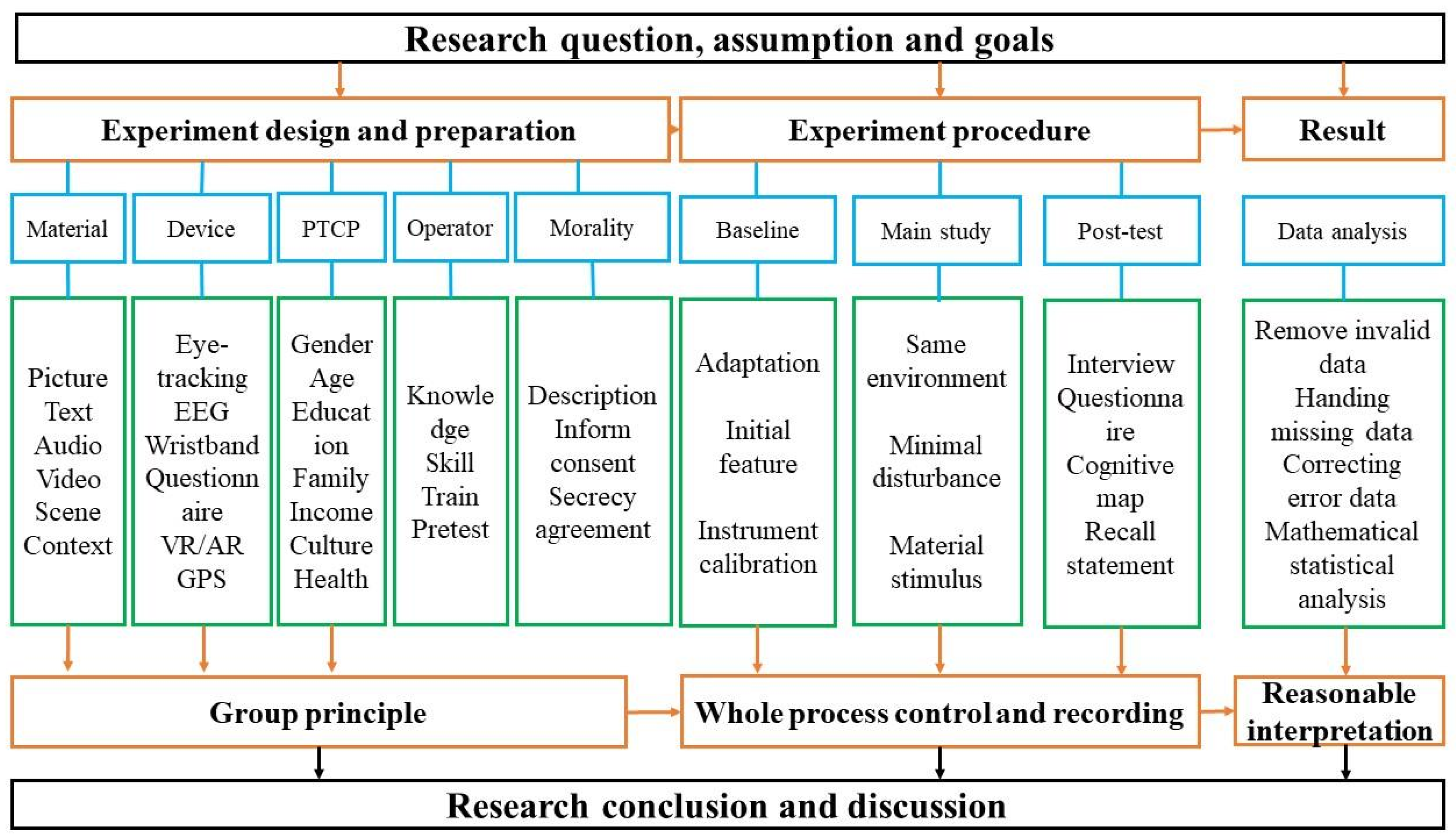
Figure 1. Neuropsychological experiment process. Drawn by the authors.
2.2. Bibliometric Analysis: Countries (Regions) and Hot Issues
2.2.1. Countries (Regions) Cluster and Timing Progress
By choosing bibliographic coupling as the analysis type and countries as the analysis unit, with the minimum number of documents as six, forty countries or regions meet the thresholds. The countries or regions of publications are shown in Figure 2, and the ten countries (regions) with the most publications are shown in Table 1. From the results, researchers from Taiwan, China have begun to pay more attention to the neuropsychological mechanisms of individual behavior in CEM earlier and have published some achievements. Then, American researchers have focused on this field and have published a large number of achievements. After that, researchers from Australia, Canada, England, France, and Spain also began to get involved in neuropsychological research and published some achievements. In these countries (regions), Australia has the most publications. Indian scholars then paid attention to this research topic and carried out some related research. In the most recent time period, Italian researchers also realized the important role of neuropsychology in revealing behavioral mechanisms and carried out lots of research in the CEM field. At the same time, Chinese scholars attended to this field; these researchers tried to introduce neuropsychological theories and methods into construction engineering management and its behavioral research, and thus a large number of achievements have been published.
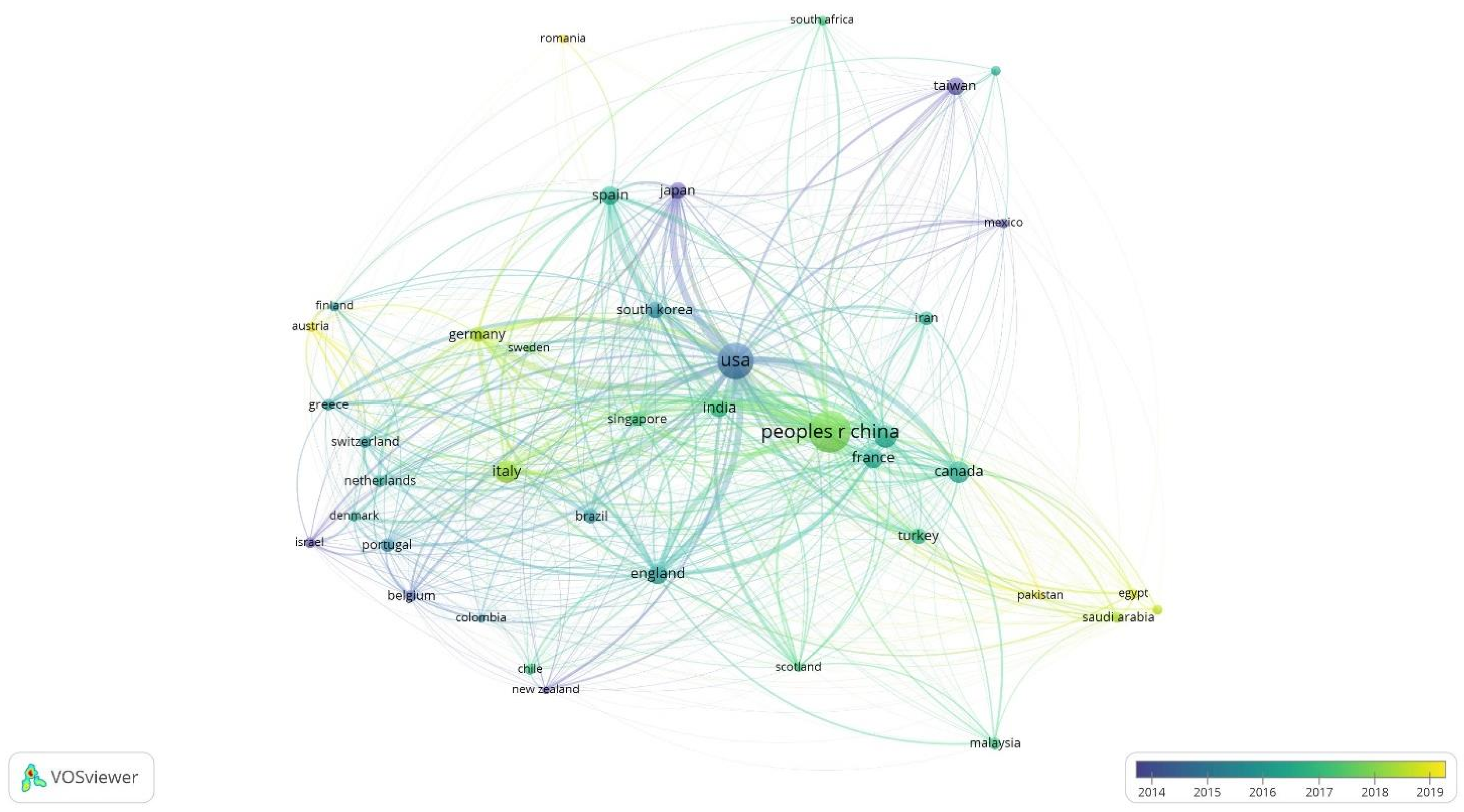
Figure 2. Countries (regions) and timing progress. The “Taiwan” in this figure refers to “Taiwan, China”.
Table 1. Distribution and timing progress examples of existing publications.
| Countries (Regions) | Average Publication Year | Publication Count |
|---|---|---|
| China | 2018 | 370 |
| USA | 2015 | 263 |
| Australia | 2016 | 79 |
| Italy | 2018 | 72 |
| Canada | 2016 | 64 |
| England | 2016 | 56 |
| France | 2016 | 52 |
| India | 2017 | 48 |
| Spain | 2016 | 48 |
| Taiwan, China | 2013 | 38 |
2.2.2. Hot Issues and Timing Progress
By selecting co-occurrence as an analysis type and keywords as the analysis unit, with the minimum number of occurrences of a keyword as six, 314 of 7443 keywords meet the thresholds. These keywords and their average publication year are shown in Figure 3, and the ten keywords with the most occurrences are shown in Table 2. From the results, “design” is the keyword that occurred earlier at the average publication year of 2015. Then, “model”, “construction”, and “simulation” occurred frequently near 2016. Scholars were beginning to seek more digital technology and simulation methods in construction research. Then in 2017, “behavior” became the most occurrent keyword, which suggests that behavior research in the CEM field is fresh and hot in recent years. At this period, “performance”, “management”, “system”, “strength”, and “impact” are also important keywords, but performance and management occurred much more. It means that researchers have paid more attention to the people-oriented perspective and cared more about the management of the behavior of individuals, such as performance and strength.
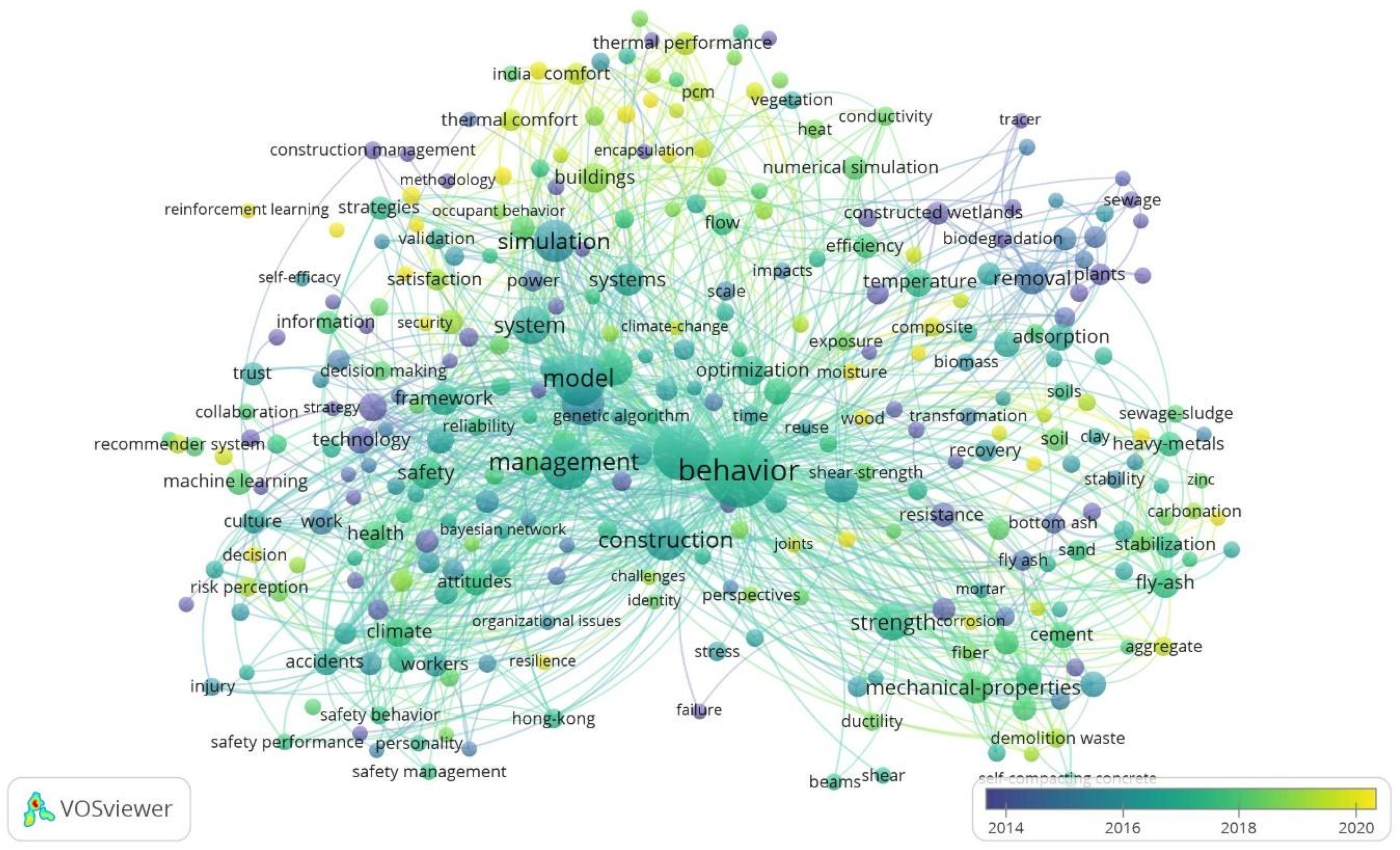
Figure 3. Keywords and timing progress.
Table 2. Keywords and timing progress examples.
| Keyword | Average Publication Year | Count |
|---|---|---|
| behavior | 2017 | 261 |
| performance | 2017 | 139 |
| management | 2017 | 106 |
| model | 2016 | 105 |
| construction | 2016 | 68 |
| simulation | 2016 | 67 |
| design | 2015 | 63 |
| system | 2017 | 51 |
| strength | 2017 | 47 |
| impact | 2017 | 45 |
Although keywords related to neuropsychology such as risk perception, stress, satisfaction, self-efficacy, stress, attitude, injury, and health are also present in the figure, they are all with little occurrence. This clearly reflects that the application of neuropsychology in construction engineering management and its behavior research is still very insufficient. To sum up, current research on construction engineering management emphasized the analysis of behavior and has shown a tendency to focus on behavioral subjects, but the related theories and methods of neuropsychology are still very lacking in this field. For some research, although neuropsychological theories and methods have been applied, construction engineering management plays a role as a mere research context. However, in interdisciplinary research, the comparative balance between different disciplines is the premise to accomplish complementary advantages and knowledge exchange for interdisciplinary research.
2.3. Generalization: Complex Correlation Mechanism
Construction engineering management studies provide the means and methods to examine the physical world and organizational management to improve the validity and efficiency of management in the construction industry. Although relevant research is very limited, scholars have explored employing neuropsychology in the behavioral research of construction engineering management. To better understand and reveal behavior mechanisms in CEM, researchers provide a recap in Table 3 with the examples of CEM behavioral studies and their key methods and findings in the last five years. The main content of CEM behavioral studies includes hazard recognition, construction equipment-related accidents and safety management, mental fatigue, physical fatigue, spatial and work memory, building inspection, engineering information formats, operations and performances, working skills, and others. The research design of CEM behavioral studies is mainly based on experiments with different simulated conditions, such as various task settings and scenarios. The methods are composed of data collection technology and analysis methodology. Neuropsychological methods are usually used for data collection such as NIRS, eye-tracking devices, and wearable EEG systems. Some self-report methods may also be added for subjective data collection, such as questionnaire surveys or cognitive mapping. Information technology and statistical methods are normally taken for data analysis, such as some deep learning or machine learning of information technology, linear discriminant analysis, or MANOVA analysis of statistical methods.
Table 3. Current research and main findings.
| Authors | Year | Main Content | Design | Method | Findings |
|---|---|---|---|---|---|
| Zhou et al. [13] | 2021 | Neurophysiological mechanics of hazard recognition | Multiple HR tasks experiment in laboratory setting and hemodynamic responses | NIRS; Fisher score; linear discriminant analysis | Left PFC was more engaged in HR |
| Li et al. [14] | 2020 | Operator’s mental fatigue; construction equipment-related accidents | Simulated excavator operation experiment with wearable eye-tracking devices | TICC method; Supervised learning algorithms; Support Vector Machine | Different levels of mental fatigue had varying effects on the operator’s productivity and safety performance |
| Shi, Du, & Ragan. [15] | 2020 | Visual attention; spatial memory; building inspection | Human–subject experiment (2D, 3D, VR) with building inspection task | Human–subject experiment; Eye-tracking | There is a positive relationship between visual attention (fixation time) and spatial memory |
| Shi, Du, & Worthy. [16] | 2020 | Engineering information formats; construction operations; work memory | Participants reviewed the operational instructions for a pipe maintenance task, performed the task from memory | Human–subject experiment; cognitive load analysis with survey | Larger pupil dilation during encoding, indicative of successful working memory formation, was associated with better subsequent performance |
| Shi, Zhu, Mehta, & Du. [17] | 2020 | Industrial shutdown maintenance; training outcome under stress | A virtual reality (VR) system integrated with the eye-tracking function to simulate the operation scenarios | Virtual reality experiment; fNIRS | Stressful training has strong impact on neural connectivity and gaze movement patterns, which further effect final performance |
| Xing et al. [7] | 2020 | Physical and mental fatigue of construction workers; safety management | Manual handling tasks for physical fatigue statuses; cognition-required risk identification task for mental fatigue, wearable EEG sensor fatigue detection and measurement | Pilot experimental method | High physical fatigue could accelerate the induction of mental fatigue; more attention sources were required during the intensive manual handling tasks |
| Hasanzadeh et al. [9] | 2017 | Construction workers’ hazard identification skills |
An experiment was designed to track eye movements of construction workers while they searched for hazards in randomly ordered construction scenario images | Eye-tracking experiment; MANOVA analysis | Hazard identification skills significantly impacted workers’ visual search strategies; fixation count can discriminate workers with high hazard-identification skills and at-risk workers |
| Wang et al. [18] | 2017 | Workers’ attention and vigilance in construction activities | On-site experiment to analyze the EEG signal patterns when construction workers avoid different obstacles in their tasks | Wearable EEG system; on-site experiment | EEG signal properties such as frequency, power spectrum density, and spatial distribution can effectively reflect the workers’ perceived risk level |
Based on the review of relevant literature findings, researchers try to establish a behavioral correlation mechanism in CEM from the perspective of neuropsychology. Although this mechanism may be difficult to cover in all research results, it can still intuitively demonstrate how neuropsychological mechanisms affect human behavior and ultimately play a role in CEM. As Figure 4 shows, current neuropsychological research on behavior mainly starts from visual behavior, and the main content of CEM is “risk identification” and “performance evaluation and prediction”. For example, Wang et al. (2017) found that EEG signal properties such as frequency, power spectrum density, and spatial distribution can effectively reflect the workers’ perceived risk level [18]. Shi et al. (2020) found that stressful training has a strong impact on neural connectivity and gaze movement patterns, which further affect final performance [17]. Some research conclusions clearly point out specific indicators and their positive or negative effects. For example, Shi, Du, & Ragan (2020) found a positive relationship between visual attention (fixation time) and spatial memory [15]. However, many studies only found correlations between certain neuropsychological causes and behavioral outcomes. It is difficult to explain more detailed action paths, degrees, and valence, especially when the complex nervous system of the brain is involved.
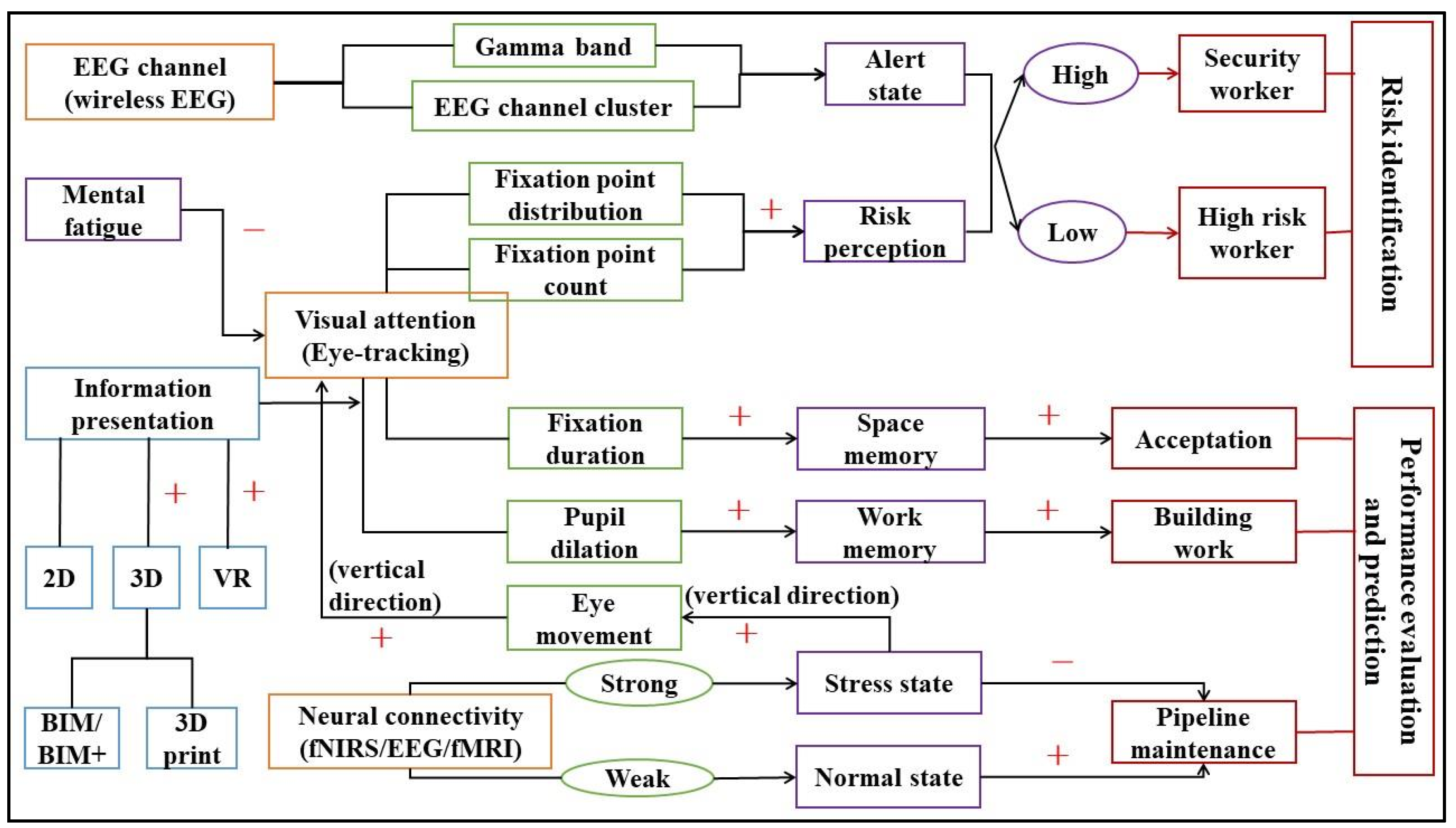
Figure 4. Complex behavioral associations. “+” indicates enhancing or positive promotion, “−” indicates weakening or negative inhibition, “unsigned” paths represent correlation only.
Eye-tracking research on visual behavior has successfully found that specific eye-movement indicators have an indicative effect on certain perceptions and cognitive behaviors, resulting in improved or weakened effects. For example, the distribution and number of fixation points can positively enhance risk perception, to identify whether the participant can keep a high level of safety at work. Moreover, gaze time and pupil dilation can positively promote the participant’s memory of space and task content, respectively, and then positively promote the acceptance or building work of construction, and supremely help predict behavioral performance. It is worth noting the cognitive state of the participant may not be the result of neuropsychological effects, but the cause of different neuropsychological manifestations. For instance, mental fatigue will negatively affect workers’ visual attention.
In addition, the results in the figure also show the effect of stress on eye movement. When participants are under high stress, their eye movements will improve, and their visual attention will be more concentrated in the vertical direction. It will directly affect the acquiring of visual information. Relevant research shows that in pipeline maintenance work of construction engineering, when the pressure load for the staff is large, the work’s precision will reduce. The conclusion in the diagram also shows the influence of information presentation (such as the renderings of construction) on visual attention. As 3D presentations influence the fixation time of visual attention, there is research that found that 3D presentations, such as 3D images, BIM models, 3D printing and virtual reality technologies, are better than 2D planes in rendering effect.
In general, conducting behavioral research in CEM from the perspective of neuropsychology reflects a multidisciplinary research trend. The research in this field involves three complex dimensions: the brain and nervous system, the construction engineering management system, and individual and behavioral research (see Figure 5). For the research field, research between the brain and nervous system and construction engineering, or between the brain and nervous system and individual behavior, is mainly exploring the internal causes of external response. Research between behavior and CEM is mainly focused on the impact on performance. The essence is the result of interaction among the internal neuropsychological mechanisms, the external behavioral mechanisms, and the construction engineering management mechanism. Therefore, the core of this multidisciplinary field is the effect paths among three mechanisms. As for the science of construction engineering management, knowledge from the four disciplines of psychology, neuroscience, management, and architecture should be absorbed. Moreover, the intersection between four disciplines needs to be noticed with an interaction in mind of combining the subjective and objective, the physical and mental, and the micro and macro.
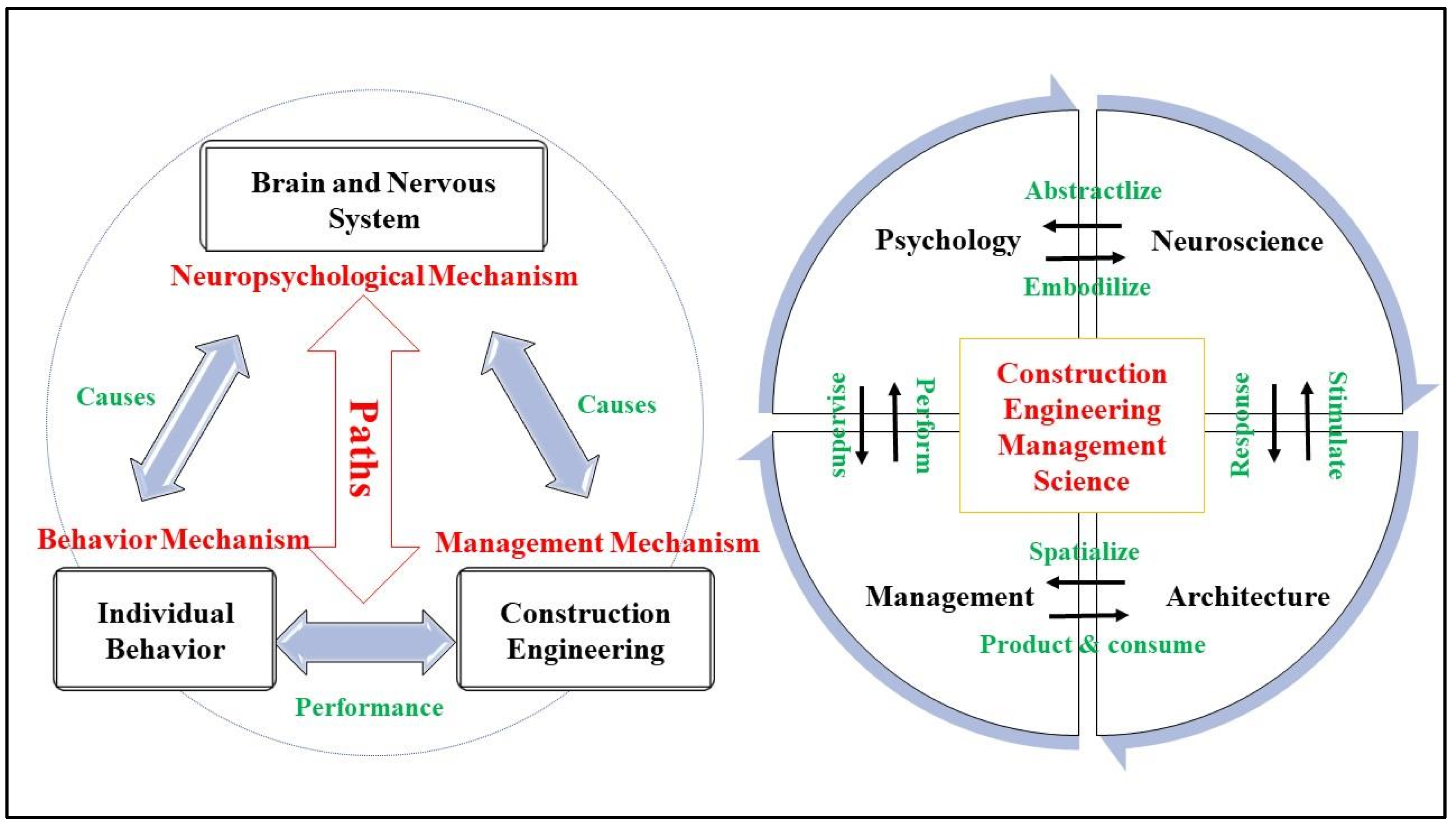
Figure 5. Interdisciplinary interrelationship.
This entry is adapted from the peer-reviewed paper 10.3390/buildings12101591
References
- Kalat, J.W. Biological Psychology, 13th ed.; Cengage Learning: Singapore, 2015.
- Horton, A.M.J.; Wedding, D.; Phay, A. A current perspective on assessment of and therapy for brain-damaged individuals. In Applied Techniques in Behavioral Medicine (59–85); Golden, C.J., Graber, B., Strider, F., Strider, M.A., Alcaparres, S.S., Eds.; Grune & Stratton: New York, NY, USA, 1981.
- Horton, J.A.M.; Miller, W.G. Neuropsychology and behavior therapy. Prog. Behav. Modif. 1985, 19, 1–55.
- Plassmann, H.; Venkatraman, V.; Huettel, S.; Yoon, C. Consumer neuroscience: Applications, challenges, and possible solutions. J. Mark. Res. 2015, 52, 427–435.
- Adolphs, R. Conceptual challenges and directions for social neuroscience. Neuron 2010, 65, 752–767.
- Camerer, C.; Loewenstein, G.; Prelec, D. Neuroeconomics: How neuroscience can inform economics. J. Econ. Lit. 2005, 43, 9–64.
- Xing, X.; Zhong, B.; Luo, H.; Rose, T.; Li, J.; Antwi-Afari, M.F. Effects of physical fatigue on the induction of mental fatigue of construction workers: A pilot study based on a neurophysiological approach. Autom. Constr. 2020, 120, 103381.
- Li, J.; Li, H.; Wang, H.; Umer, W.; Fu, H.; Xing, X. Evaluating the impact of mental fatigue on construction equipment operators’ ability to detect hazards using wearable eye-tracking technology. Autom. Constr. 2019, 105, 102835.
- Hasanzadeh, S.; Esmaeili, B.; Dodd, M.D. Impact of construction workers’ hazard identification skills on their visual attention. J. Constr. Eng. Manag. 2017, 143, 4017070.
- Lucko, G.; Rojas, E.M. Research validation: Challenges and opportunities in the construction domain. J. Constr. Eng. Manag. 2010, 136, 127–135.
- Li, Z.; Meng, Q.; Sheng, Z.; Li, Q. Analysis on performance and evolution of mass stimulation under project quality optimization. Chin. J. Manag. Sci. 2012, 3, 112–121. (In Chinese)
- Bernold, L.E.; Lee, T.S. Experimental research in construction. J. Constr. Eng. Manag. 2010, 136, 26–35.
- Zhou, X.; Hu, Y.; Liao, P.; Zhang, D. Hazard differentiation embedded in the brain: A near-infrared spectroscopy-based study. Autom. Constr. 2021, 122, 103473.
- Li, J.; Li, H.; Umer, W.; Wang, H.; Xing, X.; Zhao, S.; Hou, J. Identification and classification of construction equipment operators’ mental fatigue using wearable eye-tracking technology. Autom. Constr. 2020, 109, 103000.
- Shi, Y.; Du, J.; Ragan, E. Review visual attention and spatial memory in building inspection: Toward a cognition-driven information system. Adv. Eng. Inform. 2020, 44, 101061.
- Shi, Y.; Du, J.; Worthy, D.A. The impact of engineering information formats on learning and execution of construction operations: A virtual reality pipe maintenance experiment. Autom. Constr. 2020, 119, 103367.
- Shi, Y.; Zhu, Y.; Mehta, R.K.; Du, J. A neurophysiological approach to assess training outcome under stress: A virtual reality experiment of industrial shutdown maintenance using Functional Near-Infrared Spectroscopy (fNIRS). Adv. Eng. Inform. 2020, 46, 101153.
- Wang, D.; Chen, J.; Zhao, D.; Dai, F.; Zheng, C.; Wu, X. Monitoring workers’ attention and vigilance in construction activities through a wireless and wearable electroencephalography system. Autom. Constr. 2017, 82, 122–137.
This entry is offline, you can click here to edit this entry!
